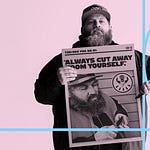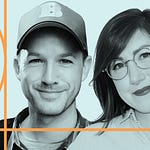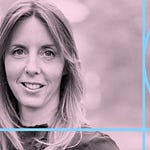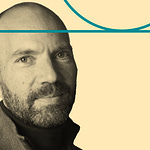Hi everyone!
Aarron and Eli are traveling with their families for Spring Break, so we’re bringing back one of our favorite episodes from 2023 with the band OK Go.
In the time since we recorded the interview, they’ve come out with a new album, and with several new music videos, including for the track Love, shot with no cuts…just “mirrors, robotics, and a whole lot of planning.”
Enjoy!
Check out the “making-of” video as well.
Not many bands hire Russian pilots to film a Zero-G video on their cosmonaut training plane, known as the “vomit comet”. But those are the kinds of extremes that OK Go will go to in the pursuit of creativity.
Tim Nordwind and Damian Kulash, the band’s founders, met at camp as pre-teens in search of a fellow creative nerd, and founded the band in 1998. Over the past 25 years, they’ve created 3 Grammy-nominated music videos, and won Best Music Video for Here It Goes Again.
From the perfectly timed explosions filmed in slow-motion for their song The One Moment, to the immensely elaborate Rube Goldberg contraption they created for This Too Shall Pass, OK Go is almost like a performance-art troupe that just happens to be a fantastic rock band.
In this episode on the creative process, we talk to Tim and Damian about how they come up with ideas, the macro and micro elements of their creativity, and achieving the impossible.
Premium Episodes on Design Better
This ad-supported episode is available to everyone. If you’d like to hear it ad-free, upgrade to our premium subscription, where you’ll get an additional 2 ad-free episodes per month (4 total). Premium subscribers also get access to the documentary Design Disruptors and our growing library of books, as well as our monthly AMAs with former guests, ad-free episodes, discounts and early access to workshops, and our monthly newsletter The Brief that compiles salient insights, quotes, readings, and creative processes uncovered in the show.
Visiting the links below is one of the best ways to support our show:
Masterclass: MasterClass is the only streaming platform where you can learn and grow with over 200+ of the world's best. People like Steph Curry, Paul Krugman, Malcolm Gladwell, Dianne Von Furstenberg, Margaret Atwood, Lavar Burton and so many more inspiring thinkers share their wisdom in a format that is easy to follow and can be streamed anywhere on a smartphone, computer, smart TV, or even in audio mode. MasterClass always has great offers during the holidays, sometimes up to as much as 50% off. Head over to http://masterclass.com/designbetter for the current offer.
Aquatru: We’d like to think our tap water is clean and healthy, but for so many there are impurities and chemicals that can be detrimental to our health. We’re big fans of AquaTru, makers of reverse osmosis filtration systems for your countertop or under sink. Get 20% OFF any AquaTru purifier at AquaTru.com with discount code DESIGNBETTER.
Enter to win a MacBook Pro, and help us make the show even better by taking a short survey: dbtr.co/survey
If you're interested in sponsoring the show, please contact us at: sponsors@thecuriositydepartment.com
If you'd like to submit a guest idea, please contact us at: contact@thecuriositydepartment.com
Insights from the episode
1. 🔍 The Elusive Nature of Creative Success
Damian eloquently describes creativity's intangible quality:
"The thing that works is always a little bit out of reach... It's like cotton candy. It's very real. You can look at it. You can taste it. You know it takes up space, but you can't really get your hands on it, it just kind of evaporates."
He emphasizes that creative breakthroughs happen at the edge of what's known or formulated – that moment when one plus one equals something unexpectedly greater.
2. 🌉 Creative Evolution Through Technology
The band's trajectory illustrates how creative careers adapt to technological change. They formed in 1998 as a traditional rock band because creative disciplines were more siloed then. When YouTube emerged, they seized the opportunity to merge their visual creativity with their music, becoming pioneers in a new hybrid art form.
As Tim describes: "We started at a time when the traditional music industry was really starting to fail," which required them to find new paths to their audience.
3. 🧩 Finding the Right Creative Boundaries
Damian shares that for their creative process to work, ideas need to be "big enough and small enough" – expansive enough to explore but with clear constraints:
"It has to feel like it's expansive enough that we are going to be able to play with it for a full three or four minutes and small enough that there will be boundaries to push up against because if there's no boundaries, there's sort of no form."
This balance of freedom and constraint is central to their creative approach.
4. 🌈 Collaborative Multiplication
OK Go's work embodies the power of effective collaboration. Damian notes that successful collaboration should feel "like cheating to everybody involved," where "I came in with a really good idea and I'm leaving with an even better one."
















